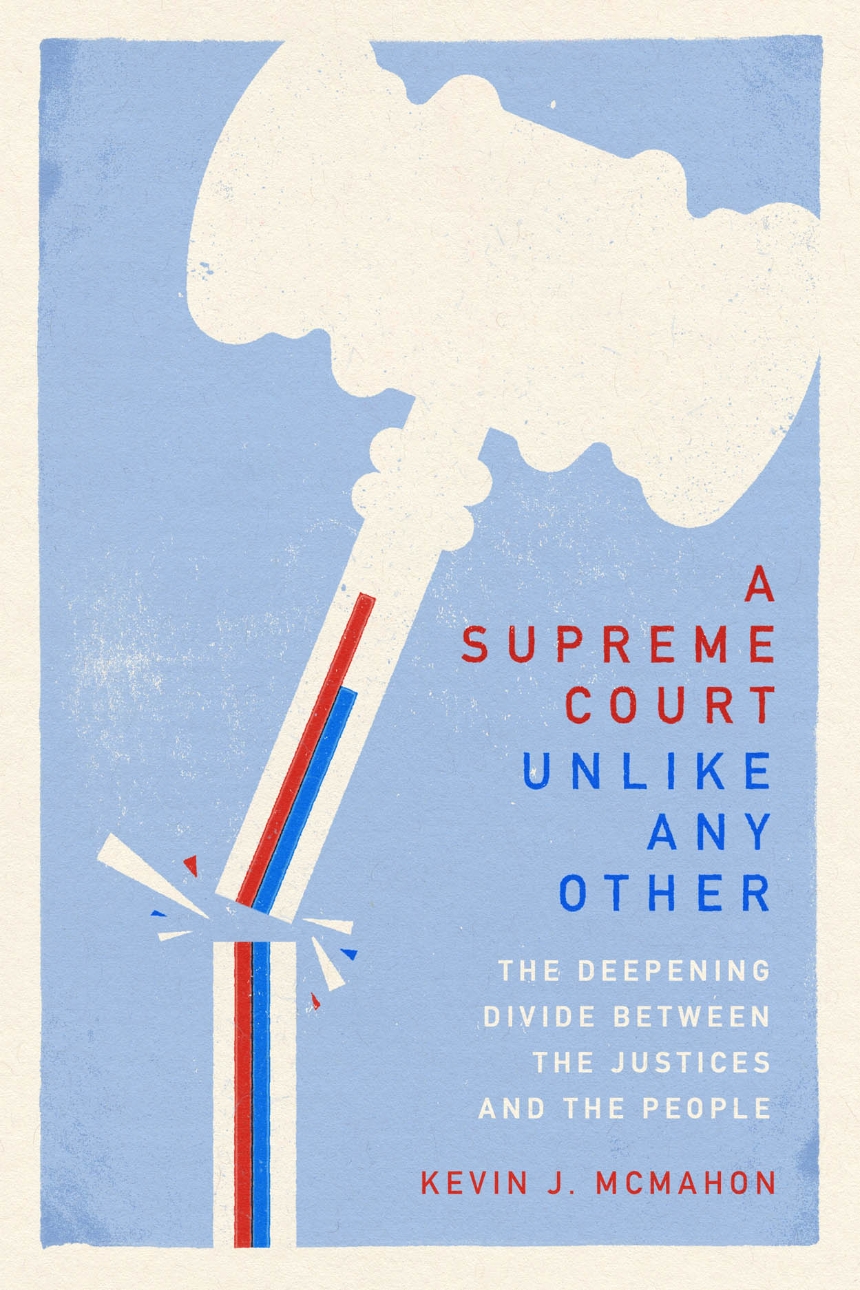A Supreme Court Unlike Any Other
The Deepening Divide Between the Justices and the People
A Supreme Court Unlike Any Other
The Deepening Divide Between the Justices and the People
A data-rich examination of the US Supreme Court's unprecedented detachment from the democratic processes that buttress its legitimacy.
Today’s Supreme Court is unlike any other in American history. This is not just because of its jurisprudence but also because the current Court has a tenuous relationship with the democratic processes that help establish its authority. Historically, this “democracy gap” was not nearly as severe as it is today. Simply put, past Supreme Courts were constructed in a fashion far more in line with the promise of democracy—that the people decide and the majority rules.
Drawing on historical and contemporary data alongside a deep knowledge of court battles during presidencies ranging from FDR to Donald Trump, Kevin J. McMahon charts the developments that brought us here. McMahon offers insight into the altered politics of nominating and confirming justices, the shifting pool of Supreme Court hopefuls, and the increased salience of the Court in elections. A Supreme Court Unlike Any Other is an eye-opening account of today’s Court within the context of US history and the broader structure of contemporary politics.
384 pages | 18 line drawings, 29 tables | 6 x 9 | © 2024
Law and Legal Studies: The Constitution and the Courts
Political Science: American Government and Politics, Judicial Politics
Reviews
Table of Contents
Preface: Democracy in Court? Presidents and Justices
Chapter 1: The Supreme Court’s Democracy Gap and the Erosion of Legitimacy
Part I: Constructing a Historically Distinct Court: How the Conservative Quest for Judicial Success Isolated the Justices from Majoritarian Democracy
Chapter 2: Numerical Minority Justices as a Conservative Majority
Chapter 3: An Electoral-Confirmation Connection and the Historical Rarity of a Contested Justice
Chapter 4: How a Resurgent Senate Tamed the Judicial Desires of Electorally Dominant Presidents
Chapter 5: Polarized Politics and the Court’s Legitimacy Paradox
Part II: Searching for Wizards of the Law: How the Rise of the Supreme Elite Further Distanced the Court from the American People
Chapter 6: How the Redefinition of Quality Created a Cookie-Cutter Court
Chapter 7: Choosing Right: How Conservative Efforts to Eliminate Ideological Drift Stifled Republican Presidential Choice
Chapter 8: Democratic Presidents and the Avoidance of Confirmation Conflict
Chapter 9: How the Selection of Unknown Voices with Different Audiences Transformed the Court into a Judicial Aristocracy
Part III: Legitimacy on the Campaign Trail: Can Electoral Success by Judicially Focused Candidates Reduce the Court’s Democracy Gap?
Chapter 10: The Court Issue and the Presidential Election of 2016
Chapter 11: The “Kavanaugh Effect” and the 2018 Senate Elections
Chapter 12: The Never-Ending Promise of a Conservative Court and the 2020 Presidential Election
Concluding Section: Confronting Detours and Dead Ends: Liberal Resistance and Frustration in the Age of Conservative Dominance on the Court
Chapter 13: How a Numerical Minority Rules the Law and Prevents Progressive Political Change
Chapter 14: Reducing the Democracy Gap at the Coalface of Constitutional Politics
Notes
References
Index
